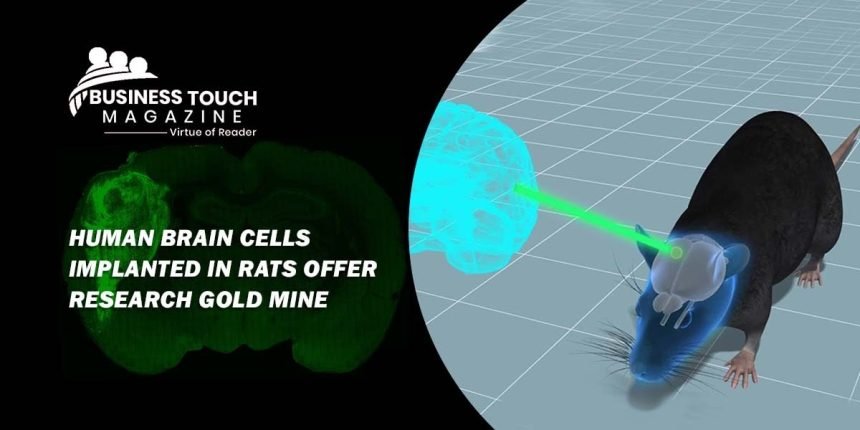More than a dozen different regions of the human brain have already been successfully grown in petri dishes from stem cells by scientists.
It is extremely challenging to study the onset of these illnesses since animals do not suffer from them in the same ways that humans do, and humans cannot be easily opened up for investigation.
Scientists have successfully transplanted and merged human brain cells into newborn rats, opening up a new avenue for the study of complex psychiatric illnesses like schizophrenia and autism, and potentially the testing of remedies.
This makes it very challenging to study the onset of these illnesses, as animals do not suffer from them in the same ways that humans do, and humans cannot be easily opened up for investigation.
In vitro, researchers have successfully assembled more than a dozen different brain areas from stem cells.
However, according to the study’s principal author and Stanford University professor of psychiatry and behavioural sciences, Sergiu Pasca, “neurons don’t grow to the size which a human neuron in an actual human brain would grow” in petri dishes.
And without the context of a living organism, they are unable to inform us of the signs and symptoms that accompany a problem.
The researchers overcame these obstacles by implanting organoids, or clusters of human brain cells, into the cerebral cortex of newborn rats.
Although human neurons have been successfully implanted into adult rats before, there is a limit to how well implanted cells can integrate after that age because the animal’s brain stops developing.
When transplanted at this stage, “we found that these organoids can grow relatively large, they become vascularised” (receive nutrients by the rat), and they can cover roughly a third of a rat’s (brain) hemisphere, as stated by Pasca.
Blue Light Reward
Puffing air across the whiskers of the rats elicited electrical activity in the human neurons, demonstrating the level of integration between the human and rat nervous systems.
This demonstrated an input connection, since the human tissue in the brain responded to stimulus delivered to the rat from the outside world.
After determining that the rat’s body could receive impulses from human neurons, researchers tried the opposite experiment.
They placed human brain cells modified to respond to blue light into the rats’ skulls and then trained the rodents to associate the shining of blue light on the transplanted neurons with the delivery of water from a spout.
According to the study published in the journal Nature on Wednesday, pulsating the blue light made the rats run to the spout after being exposed to it for two weeks.
The team has utilised this method to demonstrate that organoids grown from Timothy syndrome patients exhibit slower growth and reduced electrical activity compared to those grown from healthy people.
This discovery “holds the potential to increase what we know about human brain development and neurodevelopmental problems,” according to Tara Spires-Jones, a professor at the UK Dementia Research Institute at the University of Edinburgh.
However, she did point out that the human neurons “could not reproduce all of the critical aspects of the human growing brain,” thus additional work is needed to make sure the method is a “robust model.”
Ethical Debates
Potential ethical problems were raised by Spires-Jones, who was not engaged in the research, “including whether these rats will have more human-like thinking and consciousness.”
According to Pasca, the rats did not appear to be affected by the brain implants or experience any pain as a result of them.
“There are no changes to the behaviour or well-being of the rats… there are no enhancements of functions,” he stated.
He contended that “natural barriers” prevent the rat from becoming too human due to the limited extent to which human neurons can merge with the rat brain.
Rats mature at a considerably faster rate than humans do, “therefore there’s only so much that the rat cortex can integrate,” he explained.
In contrast, Pasca stated that he would not approve the use of the procedure in primates at this time because these restrictions might no longer exist in species closer to humans.
Though, he thinks it’s “morally necessary” to figure out how to effectively study and treat psychiatric diseases.
We feel uneasy because “certainly” these simulations are becoming more human, he said.
But “human psychological diseases are to a significant extent unique to humans.” Because of this, we need to give some of these concepts serious consideration before moving further.




